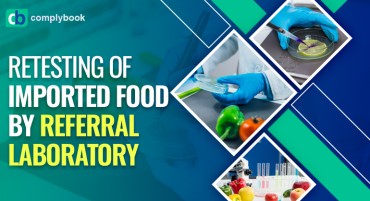

FSSAI Guidelines for Meat and Meat Products
WHAT ARE THE FSSAI GUIDANCE FOR MEAT AND MEAT PRODUCTS?
India's food consumption pattern is gradually diversifying to include high-value goods. The importance of livestock goods, particularly meat and meat derivatives, is crucial in this diverse meal. Meat is a nutrient-dense food due to the abundance of proteins, minerals, and all B complex vitamins, as well as the good digestion and well-balanced composition of vital nutrients, this food item is in high demand. 71 percent of Indians, according to the National Sample Survey Office (NSSO), In the year 2014, the people consumed meat.. Producers and consumers must work together with regulatory organisations to guarantee that meat produced in the country complies with international standards set benchmarks.
HYGIENE AND SAFETY CONCERNS
Meat and poultry products are especially susceptible to infection and deterioration due to their nutritional value and perishability. The functioning of the unorganised meat sector, safety and hygiene issues are more likely to arise when there are few facilities consist of the following:
(i) Contamination by microorganisms
Microbial infections may infect meat and poultry products as a result of poor hygiene and sanitation practices slaughtering, meat processing/handling, storage, and transportation hygienic practices, it poses a significant risk of foodborne illness/infection This could be attributed to a variety of factors consider the following:
- Slaughtering on the floor with no way to hang the body; hanging as well in the slaughter line, both un-skinned and skinned carcasses are kept close together. Careless evisceration that spreads intestinal disease, suspension that is too low and touches the floor substance onto the surface of the flesh.
- Microbial pathogens can be conveyed from workers' hands, tools, working surfaces, equipment, water, pests, packaging, various lots of meat/offal, and during dressing to raw meat/offal and ready-to-eat products.
- Ineffective management systems result from a lack of training, supervision, and knowledge of the necessity of hygiene measures and quality control tools (HACCP principles), which increases the risk of microbial pathogen contamination of meat and poultry products.
(ii) Contamination by chemicals
Residues of veterinary drugs, antibiotics, pesticides, heavy metals, and processing aids, among other things, could cause this. Antibiotics and veterinary medications are used indiscriminately in chicken production, whether for therapeutic or preventative purposes, resulting in drug residues in edible tissues/organs of the birds as well as eggs, posing a serious health risk.
(iii) Physical pollution
Metal from rails, clips, tags, equipment, knife blades, grease, oil, paint flakes, rust, plastic, rubber bands, hair, glass splinters, bone splinters, wood splinters, sawdust, dust, dirt, dead insects, or animal droppings can all contaminate meat or poultry. Contamination by physical agents can be fully avoided.
(iv) Cross-contamination
In the meat business, it is a serious risk. It could happen as a result of the following factors:
- Cross contamination is made more likely by poor personal hygiene and workplace procedures.
- Cross contamination can also occur as a result of contaminated packaging material or a breakdown in refrigeration.
- Cross-contamination may occur if rotten meat is stored with meat meant for human consumption.
- Inadequate cleaning of reusable containers, insufficient separation of exposed and packed meat during transportation, and improperly cleaned vehicles or containers cross-contamination of meat and poultry is possible.
(v) Meat adulteration or replacement for financial advantage
Because of the increased demand for meat and meat products, as well as their rising costs, they are vulnerable to fraudulent adulteration or substitution.
(vi) Unauthorized methods of obtaining higher meat prices
These procedures include injecting water into meat to increase its weight, washing meat with chemicals at higher concentrations than required to improve its look with the goal of improving acceptability, and so on.



